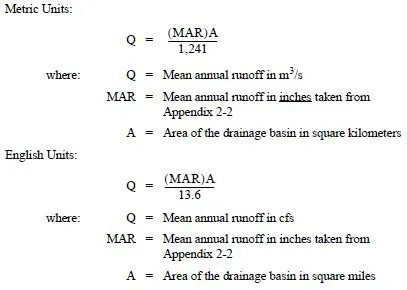The Washington State Department of Transportation (WSDOT) Olympia Service Center (OSC) Hydraulics Branch uses several methods of determining runoff rates and/or volumes. Experience has shown them to be accurate, convenient, and economical. The following methods will be discussed in detail in subsequent sections of this chapter
1. The Rational Method
2. The Santa Barbara Urban Hydrograph (SBUH) Method
3. Published Flow Records
4. United States Geological Survey (USGS) Regression Equations
5. Flood Reports
Two other methods, documented testimony and high water mark observations, may be used as back-up material to confirm the results of the above statistical and empirical methods. Where calculated results vary from on-site observations, further investigation may be required. The additional two methods are:
6. Documented Testimony
Documented testimony of long-time residents should also be given serious consideration by the designer. The engineer must be aware of any bias that testifying residents may have. Independent calculations should be made to verify this type of testimony. The information that may be furnished by local residents of the area should include, but not be limited to the following:
a. Dates of past floods.
b. High water marks.
c. Amount of drift.
d. Any changes in the river channel which may be occurring (i.e., stability of streambed, is channel widening or meandering?).
e. Estimated velocity.
f. Description of flooding characteristics between normal flow to flood stage.
7. High Water Mark Observations
Sometimes the past flood stage from a drainage area may be determined by observing high water marks on existing structures or on the bank of a stream or ditch. These marks along with other data may be used to determine the discharge by methods discussed in the Open Channel Flow chapter or the Culverts chapter of this manual.
Additional hydrologic procedures are available including complex computer models which can give the designer accurate flood predictions. However, these methods, which require costly field data and large amounts of data preparation and calculation time, can rarely be justified for a single hydraulic structure. The OSC Hydraulics Branch should be contacted before a procedure not listed above is used in a hydrologic analysis. For the sake of simplicity and uniformity, the OSC Hydraulics Branch will normally require the use of one of the first five of the seven methods listed above. Exceptions will be permitted if adequate justification is provided.
